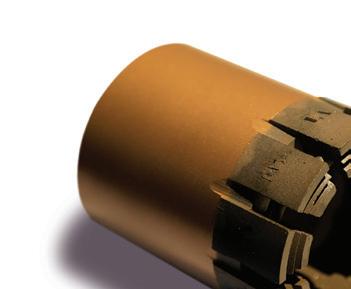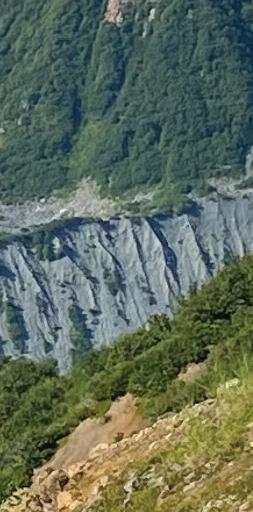
3 minute read
World-Wide Experience
INTELLIGENT APPROACH EQUALS A BETTER VALUE
Azteca Gold Corporation
Advertisement
PROJECT: Two Mile Project
LOCATION: Silver Valley, Idaho
RUEN was asked to drill a series of deep core holes beneath known mineral deposits in the Silver Valley mining district in order to confirm the existence and sxtent of deeper mineralization. Drilling proceeded on one of the holes to roughly 11,340 feet. Possibly the deepest core hole ever drilled in North America. Crews operated 24 hours a day, from start to fisish using V-wall lightweight drill rods. Special bits and an engineeered low solids polumer based drilling campaign with zero lost time accidents.
Vulcan Power Company
PROJECT: Geothermal Resource Evaluation
LOCATION: Near Fallon, Neveda
Geologic conditions and client’s needs require deep core recovery in a series of geothermal core holes. These were hubrid borings, pre-collared with casing ising a rotary drill rig, to top of the basement rock. Core holes completed to approximately 7,000 feet, drilling wire line core to TD. RUEN achieved accurate results for data collection to characterize the geothermal reservoir, and recovered core for additional exploration study at a cost savings to the client. With crews trained and experienced in geothermal hazards and nlowout prevention, this project was completed in a safe, timely manner.
Caldecott Tunnel Improvement Project
PROJECT: Geotechnical Baseline Report
LOCATION: Oakland, California
Drilling results were the basis for a Geotechnical Baseline Report (GBR). Drilling included hortixontal and angle HQ3 core holes to depths of over 900 feet each. Geotechnical aspects of the rock including RQD, bedding, fracture patterns, presence and glow rate of the groundwater were reported. RUEN’s work on this project was designed to contribute t an accurate construction bid. In general, the more complete the characterization drilling program, the fewer change orders “changed ground conditions” will follow.
Project Abstracts
Ruen’s experience in the US, South America, and Asia
CLIENT: Kiewit Pacific Company
PROJECT: Rock Quarry Investigation / Core Drilling

LOCATION: Ensenada, Mexico
CLIENT: Minera Yanacocha S.A.
PROJECT: Exploration - Reserve Def. -Hydrological Investigation
LOCATION: Cajamarca, Perú
CLIENT: Geopractica, Inc.
PROJECT: PR-53 Mariani Tunnel Project
LOCATION: San Juan, Puerto Rico
CLIENT: GeoSal
PROJECT: Consulting
LOCATION Carajas, Brazil
CLIENT: Territory Development Dept
PROJECT: New Town Ground Investigation
LOCATION: Maunsell - Sha, China
CLIENT: Omolon Gold Corporation (Amax Gold, Inc.)

PROJECT: Kegali Exploration Core Drilling Project.
LOCATION: Kubaka Mine Site - Magadan Russia
CLIENT: Teck
PROJECT: Red Dog Mine
LOCATION: Kotzebue, Alaska, USA
CLIENT: Northern Star Resources
PROJECT: Pogo Gold Mine
LOCATION: Delta Junction, Alaska, USA

CLIENT: Nova Minerals
PROJECT: Estelle Gold Trend
LOCATION: Willow, Alaska, USA











In 1982 construction began on a production shaft to a depth of 1,800 ft along with a headframe to the southwest to access higher-grade ore via underground mining methods. The projects were never completed. “The mine became uneconomical,” Ogilvie reveals. “There was significant mineralization in the ground at that point in time. But, you know, at $0.65 a pound for copper, they couldn’t really make money on that from an underground Mine.”
The mine officially closed in 1984 and ASARCO filed for Chapter 11 bankruptcy protections in 2004. After that the site was placed into an environmental trust and in 2019, $20 million worth of stabilization and reclamation work was completed. The trust also conducted valuable environmental analysis.
Elim Mining bought the mine in late 2019 for $6 million. They then renamed the site and subsequently rebranded as Arizona Sonoran Copper Company.
Reviving a Brownfield
The Cactus Project already enjoys a head start, thanks in great part to being a brownfield project. That means that much of the infrastructure is already in place with a main power line running right through the property. There is an existing substation available to step power down and feed it to a core shed and security shack. An administrative building was also already on site, however, the offices are now housed within the typical mining double-wide trailer.
But advances in mining technology is what really makes this project economically exciting. Arizona Sonoran Copper Company plans to use heap leaching to extract the copper. This requires just leaching pads and a solvent extraction electro-winning plant, according to Ogilvie, as opposed to a large, complex copper concentrator.
“Heap leach technology was in its infancy back in the 1970s when ASARCO mined the site,” he says. “So, when they initially were starting up the pit, they scraped back the overburden and then the oxide cap. But all of that oxide cap was regarded as waste and went to a surface stockpile. The same was true for any sulfide material below 0.3% copper which was the copper cut-off grade at the time.”
Ogilvie estimates that there is almost 80 million tons of material already drilled, blasted, and hauled to the surface by ASARCO that is about 0.169% total copper. “If you calculate it out that’s about 224 million lbs (nearly $873 million) worth of copper sitting in a surface stockpile.”
Because the money has already been spent removing the rock, Ogilvie views the early work at the Cactus Project as a low-hanging fruit re-handling exercise to generate cash flow. “We just pick that material up, put it through a screen, onto a conveyor belt, agglomerate and then stack it onto a leaching pad,” he says. “With the application of just sulfuric acid we’re seeing a 90% recovery of copper from the oxide!”
This methodology allows Arizona Sonoran Copper Company the cash flow to reinvest in the project. This promises to minimize the



